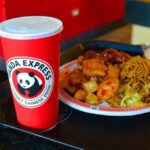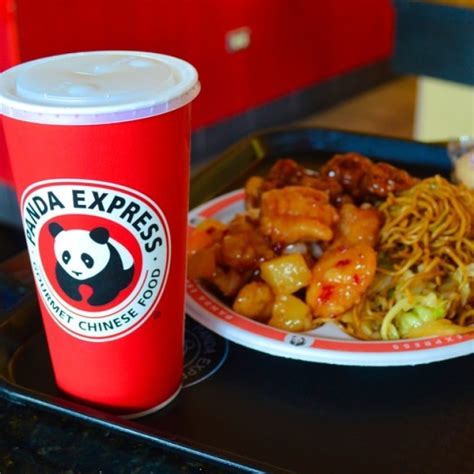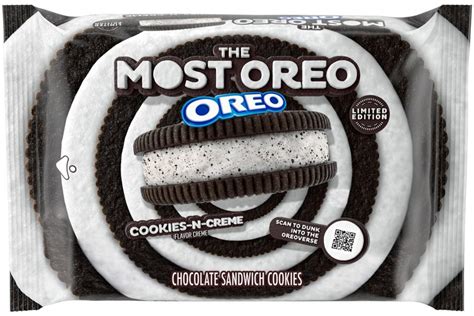
Panda Express, a ubiquitous name in the American fast-food landscape for its take on Chinese cuisine, continues to face persistent criticisms regarding the authenticity and quality of its offerings despite its widespread popularity and expansion. For many, the chain represents an accessible introduction to Chinese-inspired flavors, while others argue its dishes fall short of genuine culinary representation, perpetuating a simplified and sometimes inaccurate portrayal of Chinese food.
For decades, Panda Express has served a menu tailored to American tastes, prioritizing sweetness and convenience over traditional flavors and techniques. This approach has enabled it to establish a vast network of restaurants, catering to a broad consumer base seeking quick, affordable meals. However, the chain’s adaptation of Chinese cuisine has sparked a recurring debate: does Panda Express honor the heritage of Chinese food, or does it dilute it for mass consumption?
The criticism extends beyond mere authenticity. Some reviewers and customers point to inconsistencies in food quality, with reports of dishes being overly greasy, excessively sweet, or lacking in fresh ingredients. These issues, critics contend, contribute to a perception of Panda Express as a purveyor of culinary mediocrity rather than a genuine representation of Chinese cuisine.
Panda Express’ journey and its continued struggles to balance accessibility with authenticity remain a focal point of discussion within the food industry and among consumers.
Navigating the Culinary Crossroads: Panda Express’s Ongoing Identity Crisis
Since its inception in 1983, Panda Express has grown from a single restaurant in Glendale, California, to a global fast-food empire with over 2,400 locations. The chain’s success can be attributed to its ability to offer a standardized and predictable dining experience, appealing to a wide range of palates. Signature dishes like Orange Chicken, Broccoli Beef, and Kung Pao Chicken have become synonymous with American-Chinese fast food, achieving widespread recognition and popularity.
However, this success has not shielded Panda Express from criticism. Food critics and culinary enthusiasts frequently question the chain’s commitment to authenticity, arguing that its menu is heavily Americanized and lacks the depth and complexity of traditional Chinese cuisine.
“Panda Express is what happens when you take inspiration from a cuisine and then Americanize it to the point where it’s almost unrecognizable,” said one food blogger in a recent online review, echoing a common sentiment.
The Authenticity Debate: Balancing Tradition and Adaptation
The core of the debate surrounding Panda Express lies in its approach to authenticity. Authentic Chinese cuisine is characterized by regional variations, intricate cooking techniques, and a balance of flavors that often require specialized ingredients and skilled preparation. Panda Express, in contrast, offers a streamlined menu with simplified dishes designed for mass production and consistency.
This adaptation is not inherently negative. Many argue that Panda Express serves a valuable role in introducing Chinese-inspired flavors to a broader audience. For many Americans, it may be their first exposure to dishes that, while not entirely authentic, offer a gateway to exploring more diverse culinary traditions.
“Panda Express provides a familiar and accessible entry point for people who may not be familiar with Chinese cuisine,” explained Jennifer Lee, a food historian specializing in Asian-American culinary traditions. “It’s a starting point, not necessarily the definitive representation of Chinese food.”
However, critics argue that this simplification can lead to misconceptions about Chinese cuisine. The emphasis on sweetness, for example, is often cited as a deviation from traditional flavor profiles. The use of pre-made sauces and frozen ingredients also raises concerns about the overall quality and freshness of the food.
Quality Control Challenges: Maintaining Consistency Across a Vast Network
Another area of concern for Panda Express is maintaining consistent quality across its vast network of restaurants. With thousands of locations operating under a franchise model, ensuring that each dish meets the same standards can be challenging.
Reports of inconsistent food quality, varying portion sizes, and lapses in hygiene standards have surfaced over the years, contributing to a perception of unreliability. While Panda Express has implemented quality control measures, including standardized recipes and training programs, these efforts have not always been sufficient to address the issue.
“We are committed to providing our guests with a consistent and high-quality dining experience,” stated a Panda Express spokesperson in response to a recent customer complaint regarding undercooked chicken. “We take all feedback seriously and are continuously working to improve our operations.”
However, some former employees have painted a different picture, describing a fast-paced and high-pressure environment that can compromise food preparation. “There was so much pressure to get orders out quickly that sometimes we would cut corners,” admitted a former Panda Express cook in an anonymous online forum. “It wasn’t always possible to follow the recipes perfectly.”
The Nutritional Aspect: Addressing Health Concerns
In addition to concerns about authenticity and quality, Panda Express has also faced scrutiny regarding the nutritional content of its food. Many of its dishes are high in sodium, sugar, and fat, raising concerns about their impact on health.
The Orange Chicken, for example, a perennial favorite among customers, is often cited as a prime example of a dish that is excessively high in sugar and calories. While Panda Express has introduced healthier menu options, such as Wok Smart dishes with lower calorie counts, these alternatives have not always gained the same popularity as their more indulgent counterparts.
“We recognize the importance of offering our guests a variety of choices, including healthier options,” stated a Panda Express nutritionist in a recent interview. “We are constantly working to reformulate our recipes and provide transparent nutritional information to help our guests make informed decisions.”
However, critics argue that these efforts are not enough to offset the overall health impact of the menu. The high sodium content of many dishes, in particular, remains a concern for individuals with high blood pressure or other health conditions.
Evolving Consumer Preferences: Adapting to Changing Tastes
As consumer preferences evolve, Panda Express faces the challenge of adapting its menu and operations to meet changing demands. The growing interest in authentic and diverse cuisines, coupled with increasing awareness of health and sustainability, puts pressure on the chain to innovate and improve.
One area where Panda Express has made strides is in incorporating more vegetables and plant-based ingredients into its dishes. The introduction of Beyond Meat Orange Chicken, a vegan alternative to its signature dish, demonstrates a willingness to experiment with new ingredients and cater to a wider range of dietary preferences.
However, some critics argue that these efforts are largely symbolic and do not address the fundamental issues of authenticity and quality. They contend that Panda Express needs to make more significant changes to its menu and operations to truly reflect the evolving tastes of consumers.
The Future of Panda Express: Navigating the Path Forward
The future of Panda Express hinges on its ability to navigate the complex interplay of tradition, adaptation, and consumer expectations. The chain must find a way to balance its commitment to affordability and convenience with the growing demand for authentic and high-quality cuisine.
This may involve investing in better ingredients, refining its cooking techniques, and expanding its menu to include more regional Chinese dishes. It may also require a greater emphasis on transparency and sustainability, addressing concerns about the nutritional content of its food and the environmental impact of its operations.
Ultimately, the success of Panda Express will depend on its ability to evolve and adapt to the changing landscape of the fast-food industry. Whether it can successfully navigate these challenges and maintain its position as a leading purveyor of American-Chinese cuisine remains to be seen.
Panda Express and the American Dream: A Family’s Journey
The story of Panda Express is inextricably linked to the American Dream. Founded by Andrew and Peggy Cherng, immigrants from China, the chain’s success is a testament to their hard work, determination, and entrepreneurial spirit.
Andrew Cherng, who arrived in the United States in 1966, initially worked in his uncle’s restaurant before opening his own establishment, Panda Inn, in 1973. It was through this restaurant that he met Donald Rumsfeld, then a frequent customer and later the Secretary of Defense, who encouraged him to open a fast-food version of his restaurant.
Together with his wife, Peggy, who holds a Ph.D. in electrical engineering and played a crucial role in developing the chain’s operational systems, Andrew launched Panda Express in 1983. Their innovative approach to fast food, combined with their unwavering commitment to quality and customer service, propelled the chain to unprecedented success.
Today, the Cherngs are recognized as one of the most successful immigrant families in the United States, their story serving as an inspiration to aspiring entrepreneurs around the world.
The Cultural Impact: Shaping Perceptions of Chinese Cuisine
Panda Express’s widespread presence has undeniably shaped the way many Americans perceive Chinese cuisine. For some, it represents their primary exposure to Chinese-inspired flavors, creating a lasting impression of what Chinese food is “supposed” to taste like.
This influence is not without its critics. Some argue that Panda Express perpetuates a simplified and often inaccurate portrayal of Chinese food, reinforcing stereotypes and overlooking the rich diversity of regional cuisines.
“Panda Express has become synonymous with American-Chinese food, but it’s important to remember that it’s just one interpretation of Chinese cuisine,” said Dr. Li Wei, a professor of Chinese studies at a leading university. “It doesn’t represent the full spectrum of flavors and techniques that you find in China.”
However, others argue that Panda Express plays a valuable role in introducing Chinese culture to a wider audience. By offering familiar and accessible dishes, it can spark curiosity and encourage people to explore more authentic and diverse culinary experiences.
“Panda Express can be a gateway to understanding Chinese culture,” explained Mei Ling, a Chinese-American chef and food blogger. “It may not be the most authentic representation, but it can inspire people to learn more about Chinese food and its rich history.”
The Competitive Landscape: Navigating a Crowded Market
Panda Express operates in a highly competitive market, facing competition from a wide range of fast-food chains and restaurants. From traditional American fast-food giants like McDonald’s and Burger King to other Asian-inspired chains like Pei Wei and Teriyaki Madness, the options for consumers are vast.
To maintain its competitive edge, Panda Express must continuously innovate and adapt to changing consumer preferences. This includes offering new menu items, improving the quality of its ingredients, and enhancing the overall dining experience.
The chain has also invested heavily in technology, implementing online ordering systems, mobile apps, and loyalty programs to improve customer convenience and engagement.
However, Panda Express faces a unique challenge in balancing its commitment to affordability with the growing demand for higher-quality and more authentic cuisine. As consumers become more discerning and willing to pay a premium for better food, the chain must find a way to meet these expectations without alienating its core customer base.
Franchise Relations: Balancing Growth and Sustainability
Panda Express operates primarily under a franchise model, with a large network of independent franchisees operating individual restaurants. This model has been instrumental in the chain’s rapid growth and expansion.
However, maintaining positive relationships with franchisees is crucial for the long-term success of the business. Franchisees play a vital role in upholding the brand’s standards, providing excellent customer service, and contributing to the overall success of the company.
Panda Express has faced challenges in managing its franchise relationships, with some franchisees expressing concerns about rising costs, shrinking profit margins, and increasing competition. The company has responded by implementing programs to support franchisees, providing training and resources, and addressing their concerns.
The ability to maintain strong and collaborative relationships with its franchisees will be critical to Panda Express’s continued growth and sustainability in the years to come.
The Role of Social Media: Shaping Public Perception
Social media has become an increasingly important tool for shaping public perception of Panda Express. Platforms like Facebook, Twitter, and Instagram allow customers to share their experiences, both positive and negative, with a wide audience.
Panda Express actively engages with its customers on social media, responding to comments and complaints, promoting new menu items, and running marketing campaigns. The chain also utilizes social media to monitor its brand reputation and address any issues that may arise.
However, social media can also be a double-edged sword. Negative reviews and viral videos can quickly damage a brand’s reputation, making it essential for Panda Express to proactively manage its online presence and address customer concerns in a timely and effective manner.
The ability to harness the power of social media while mitigating its risks will be crucial for Panda Express’s continued success in the digital age.
The Environmental Impact: Addressing Sustainability Concerns
As consumer awareness of environmental issues grows, Panda Express faces increasing pressure to address its sustainability practices. This includes reducing its carbon footprint, minimizing waste, and sourcing ingredients responsibly.
The chain has implemented several initiatives to improve its environmental performance, such as using energy-efficient equipment, reducing water consumption, and recycling waste. Panda Express has also partnered with suppliers who are committed to sustainable farming practices.
However, critics argue that these efforts are not enough to offset the overall environmental impact of the chain’s operations. The use of single-use plastics, the transportation of ingredients, and the energy consumption of its restaurants all contribute to its carbon footprint.
Panda Express must continue to innovate and invest in more sustainable practices to meet the growing expectations of environmentally conscious consumers.
The Future of Fast Food: A Shifting Landscape
Panda Express operates in a fast-evolving fast-food industry where consumer preferences, technological advancements, and economic factors shape the competitive dynamics. Fast-casual restaurants, delivery services, and innovative technologies have reshaped the competitive landscape, and Panda Express must adapt to remain competitive.
The company’s focus on customer satisfaction, continuous product and service improvements, and technological integration are critical to meet the needs of the modern consumer. Panda Express’s ability to successfully navigate these challenges and capitalize on new opportunities will determine its future success.
FAQ Section:
1. Is Panda Express authentic Chinese food?
Panda Express is generally considered to be an Americanized version of Chinese cuisine. While it draws inspiration from traditional Chinese dishes, the flavors and preparations are often modified to suit American tastes, often emphasizing sweetness and simplicity. Critics argue that this deviates significantly from authentic Chinese cooking, which is characterized by regional variations, complex flavors, and specialized techniques. However, Panda Express serves as an introductory culinary experience to some customers who have never tried Chinese food before.
2. What are the main criticisms of Panda Express’s food quality?
Common criticisms include concerns about the authenticity, freshness, and nutritional value of its offerings. Many customers and reviewers point to dishes being overly greasy or sweet, lacking fresh ingredients, and having high sodium content. Inconsistent food quality across different locations and reports of lapses in hygiene standards have also been raised as areas of concern.
3. Has Panda Express made any efforts to improve its menu and offerings?
Yes, Panda Express has introduced healthier menu options, such as its Wok Smart dishes, which have lower calorie counts. They have also experimented with plant-based alternatives like Beyond Meat Orange Chicken to cater to changing dietary preferences. The company claims to be constantly working to reformulate recipes and provide transparent nutritional information.
4. How does Panda Express maintain consistency across its many locations?
Panda Express uses standardized recipes and training programs to ensure consistent food preparation across its restaurants. However, maintaining quality control in thousands of locations is challenging, and reports of inconsistencies still arise. The company states that it takes customer feedback seriously and is continuously working to improve its operations.
5. What is Panda Express doing to address sustainability concerns?
Panda Express has implemented several initiatives to improve its environmental performance, such as using energy-efficient equipment, reducing water consumption, and recycling waste. They have also partnered with suppliers who are committed to sustainable farming practices. However, critics argue these efforts are not enough to offset the chain’s environmental impact fully, particularly regarding single-use plastics and transportation.
6. What is the role of the Cherng family in Panda Express’ success? The Cherng family, particularly founders Andrew and Peggy Cherng, are the driving force behind Panda Express’s success. As immigrants from China, their story is a testament to the American Dream. Andrew’s restaurant experience and Peggy’s expertise in operational systems were critical to the chain’s growth. Their vision and dedication have shaped the company’s culture and strategy.
7. How does Panda Express use social media?
Panda Express actively uses social media platforms like Facebook, Twitter, and Instagram to engage with customers. They use it for responding to feedback, promoting menu items, running marketing campaigns, and monitoring the brand’s reputation. It also assists with addressing customer concerns.
8. What steps does Panda Express take to ensure food safety and hygiene?
Panda Express claims to have rigorous food safety protocols, regular kitchen inspections, and employee training programs focused on hygiene. Regular audits help ensure that quality and safety procedures are followed in all locations. Third-party audits, conducted by independent experts, are also done for validation.
9. What are some of the health implications associated with consuming Panda Express regularly?
Frequent consumption of Panda Express dishes, due to their high sodium, sugar, and fat content, could potentially contribute to health issues like high blood pressure, weight gain, and increased risk of heart disease.
10. How does Panda Express compare to other fast-food chains in terms of menu innovation?
Panda Express has been making efforts to innovate its menu by introducing new dishes, healthier alternatives, and plant-based options. The chain continually assesses food trends to stay competitive and appeal to evolving consumer tastes. The success of these new products can vary, but Panda Express seems to be trying to diversify the menu to cater to broader consumer preferences.
11. What challenges does Panda Express face from its franchise model? Managing a franchise network poses inherent challenges. Standardizing quality and service across numerous independently owned and operated locations requires consistent oversight and support. Franchisees need ongoing assistance with training, marketing, and supply chain management to ensure brand consistency. Additionally, conflicts or disputes between the franchisor and franchisees can arise, potentially affecting brand reputation and profitability.
12. What is Panda Express’ strategy for dealing with increasing competition in the fast-food industry?
Panda Express employs various strategies to remain competitive, including continuous product innovation (introducing new menu items and limited-time offers), enhancing customer experience (improving service quality and restaurant ambiance), investing in technology (online ordering, mobile apps, and loyalty programs), and strategic marketing campaigns. Moreover, maintaining affordable prices while delivering consistent quality remains a key focus.
13. How does Panda Express source its ingredients? Panda Express sources its ingredients from a network of suppliers, prioritizing quality and consistency. The chain emphasizes partnerships with suppliers who adhere to food safety standards. The company is constantly seeking ways to streamline the sourcing process to reduce costs and improve efficiency.
14. What initiatives has Panda Express taken to reduce waste? To decrease waste, Panda Express focuses on waste reduction and recycling programs. Using biodegradable or recyclable packaging materials, reducing food waste through inventory management, and using energy-efficient equipment are all a part of the strategy.
15. How has Panda Express adapted to the rise of online ordering and food delivery services? Panda Express has embraced digital channels to cater to the increasing demand for online ordering and delivery. The company offers ordering via its website and mobile app and has partnered with third-party delivery services like DoorDash and Uber Eats to expand its reach. These platforms enable customers to order food from the comfort of their homes, increasing convenience and driving sales.
16. What measures does Panda Express take to handle customer complaints or negative feedback?
Panda Express has established channels for customers to provide feedback, including online surveys, social media platforms, and direct contact with restaurant managers. The company says that it takes customer complaints seriously and trains its employees to handle issues with empathy and professionalism. In addition, it aims to investigate each complaint promptly and implement corrective actions to prevent similar problems.
17. How does Panda Express support local communities?
Panda Express has a history of supporting local communities through charitable donations, sponsorships, and volunteer efforts. The company often partners with organizations to support various causes, such as education, disaster relief, and food security. Engaging in community outreach also enhances the brand’s image and fosters goodwill among customers.
18. What are some emerging trends in the fast-food industry that might affect Panda Express?
Several emerging trends could impact Panda Express, including growing demand for healthier options, increasing preference for sustainable and ethical sourcing, and expanding use of technology for ordering and delivery. These trends necessitate that Panda Express adapts its strategies to remain relevant and meet evolving consumer preferences.
19. What is the employee training like at Panda Express? Panda Express invests in employee training programs to ensure that its staff has the necessary skills and knowledge to provide excellent customer service and prepare high-quality food. Training encompasses various areas, including food safety, cooking techniques, customer service protocols, and operational procedures. In addition, employees get continuous coaching and feedback to facilitate professional development.
20. How does Panda Express balance cost and quality to maintain affordable pricing?
Balancing cost and quality involves careful management of the supply chain, streamlining operations, and continuously seeking efficiency improvements. Negotiating favorable contracts with suppliers, optimizing inventory levels, and reducing waste contribute to cost savings without compromising quality. However, finding the right balance between these factors is crucial to maintain customer satisfaction and brand reputation.


![Oreo’s [Flavor Name] So Good, Petition to Make It Permanent!](https://duniateknoku.com/wp-content/uploads/2025/06/unnamed-file-876-150x150.jpg)


![Oreo’s [Flavor] So Good, Fans May Demand Permanent Status!](https://duniateknoku.com/wp-content/uploads/2025/06/unnamed-file-873-150x150.jpg)



